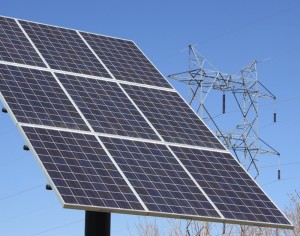The ongoing failure of subsidy-rich solar
Despite billions in taxpayer subsidies, the United States currently generates less energy from solar and wind, the darlings of government favoritism, than it did from renewables in 1950.Yes. 1950.
According to the Energy Information Administration’s “Monthly Energy Review,” through the end of 2016 solar and wind accounted for nearly 10 percent less total energy production than biomass (wood) and conventional hydroelectric power contributed to the U.S. economy nearly seven decades ago
And if one counts only electricity generation, solar clocks in just under 1.4 percent. Coal has taken its regulatory lumps in recent years but still churns out more than 30 percent of total electricity produced, with natural gas surging to nearly 34 percent by the end of 2016. For comparison, the hydraulic fracturing revolution and lower natural gas prices have added more than 8.6 times the electricity generation to our nation’s grid over the decade from 2007 to 2016 than taxpayer subsidy-rich solar did over the same time frame.
Yet click-baiting headlines from national outlets like The New York Times touting the solar industry’s job creation numbers would appear to give the apparently burgeoning industry an upper hand against its struggling legacy competitors like coal. “Last year, the solar industry employed many more Americans than coal, while wind power topped 100,000 jobs,” the Times declared.
Not so fast. The American Enterprise Institute’s Mark Perry pushed back on the Time’s breathless — and contextless — job numbers.
Perry pointed out that it isn’t the total number of jobs that matters, but how much electricity each job, every coal miner or solar panel installer, generates.
“In 2016, the coal sector generated an average of 7,745 megawatt hours of electric power per worker, more than twice the 3,812 megawatt hours of electricity generated per natural gas worker, and 79 times more electric power per worker than the solar industry, which produced only 98 megawatt hours of electricity per worker. Therefore, to produce the same amount of electric power as just one coal worker would require two natural gas workers and an amazingly-high 79 solar workers,” Perry wrote.
Look past the glitzy headlines and it isn’t all bright and sunny for solar.
Earlier this month The Wall Street Journal highlighted an ongoing Securities and Exchange Commission probe into the reporting of new customers sales by solar installers and whether or not the companies are misleading investors and misrepresenting the number of solar cancellations.
Potential customers have complained and even filed lawsuits against what they describe as “strong-armed” sales tactics by solar representatives. “Hundreds of complaints have been filed against solar companies to attorneys general in Texas, Oregon, California and Florida, with customers saying they are paying more on their utility bills, not less as they were promised, and have been sold expensive systems they can’t afford, according to Freedom of Information Act requests filed by the Campaign for Accountability, a consumer-watchdog group, and according to lawsuits filed by customers,” the WSJ reported.
Solar companies continue to file for bankruptcy, while heavily promoted solar technologies like thin-film panels (remember the failed Abound Solar and their Department of Energy loan guarantee?) struggle to maintain even a niche market within the sector.
Even powerhouses like Tesla/Solar City have run aground on the rollout of their new solar roof tiles. A Texas senior editor for Ars Technica, a site devoted to technology, used the company’s calculator to figure out how much the flashy solar tiles, designed to look just like your current roof tiles, would cost him. Even when factoring in a generous $23,500 federal investment tax credit, “Tesla’s calculator says installing a roof on Lee’s house would actually cost [emphasis in original] him $41,000 over 30 years.”
“The economics are not yet compelling where housing and utility costs are low and property taxes are high,” Elon Musk wrote on Twitter, responding to the online post.
The corporate favoritism through subsidies showered on wind and solar by governments has been significant. Examples include $26 billion in taxpayer dollars from programs like the IRS 1603 program that offered cash payments in lieu of tax credits for renewable projects (and that’s just one subsidy), favorable renewable portfolio mandates in 29 states including a 30 percent mandate here in Colorado, generous ratepayer wealth transfer schemes like net metering, and a 24/7 media blitz for the past decade pushing for government to pick winners (wind and solar) and losers (coal).
Yet after all this, there is still very little to show for it, once you throw out the misleading headlines.
Michael Sandoval is an associate energy policy analyst with the Independence Institute.


No comments:
Post a Comment